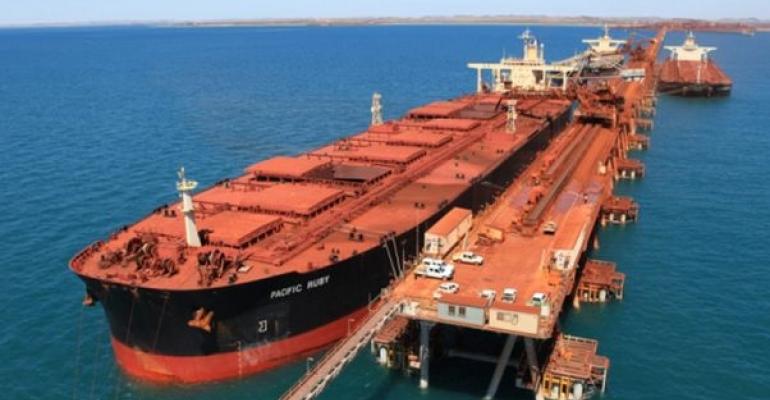In the first four months of this year, the capesize fleet grew due to the deliveries of five valemaxes (380,000-400,000 dwt), six VLOCs (200,000-350,000 dwt), one standard capesize (140,000-190,000 dwt) and one baby capesize (100,000-130,000 dwt), amounting to 3.8m dwt entering the already crowded market.
In addition, deliveries scheduled for the rest of this year as well as 2020 and 2021 paint a bleak outlook for the market balance.
A further six valemaxes, 46 VLOCs, 17 standard capesizes, and two baby capesizes are slated to be delivered in 2019. A whopping 24.8m dwt comprising of three valemaxes, 79 VLOCs, 20 standard capesizes and eight baby capsizes has been ordered to be delivered in 2020, and deliveries of 8m dwt in 2021 has already been ordered.
“Because of delays and cancellations, Bimco expects that around 11.1m dwt will be added to the fleet in the rest of the year, followed by 20.4m dwt in 2020,” said Peter Sand, chief shipping analyst of Bimco.
And while demolition activities have risen, they have been insufficient to address the fragility of the market balance.
From January to April 2019, demolition of dry bulk ships was 120% higher than in the same period of 2018, with much of this increase coming from the scrapping of 18 capesize vessels with a total capacity of 3.4m dwt, up from 1.1m dwt in the previous corresponding period.
Read more: Capesize market heading for rougher seas
The positive effect of the higher demolition rates, however, were offset by reduced demand due to a few market shocks such as the dam collapse in Brazil, bad weather in Australia and the long term challenge of falling Chinese iron ore imports.
“Due to the falling demand for commodities traditionally carried by capesize ships, limiting fleet growth will become even more important if freight rates are to be profitable,” said Sand.
Capesize earnings have averaged $8,079 per day since the start of the year, a loss making level with Bimco estimating that a capesize ship needs to earn around $15,300 per day to be able to cover daily costs.
Even as demolition activity may rise somewhat with the upcoming implementation of the IMO 2020 fuel sulphur cap and the Ballast Water Convention, the market for large dry bulk ships is likely to face continued pressure as there is little potential for substantial growth on the demand side, Sand noted.
On the other hand, prospects for dry bulk ships smaller than capsizes are less concerning as the market conditions are more stable, according to Sand. Despite some disruption to trade lanes due to the trade war, the markets for these smaller ships face fewer disruptions on both the demand and supply side.
Copyright © 2024. All rights reserved. Seatrade, a trading name of Informa Markets (UK) Limited. Add Seatrade Maritime News to your Google News feed.


